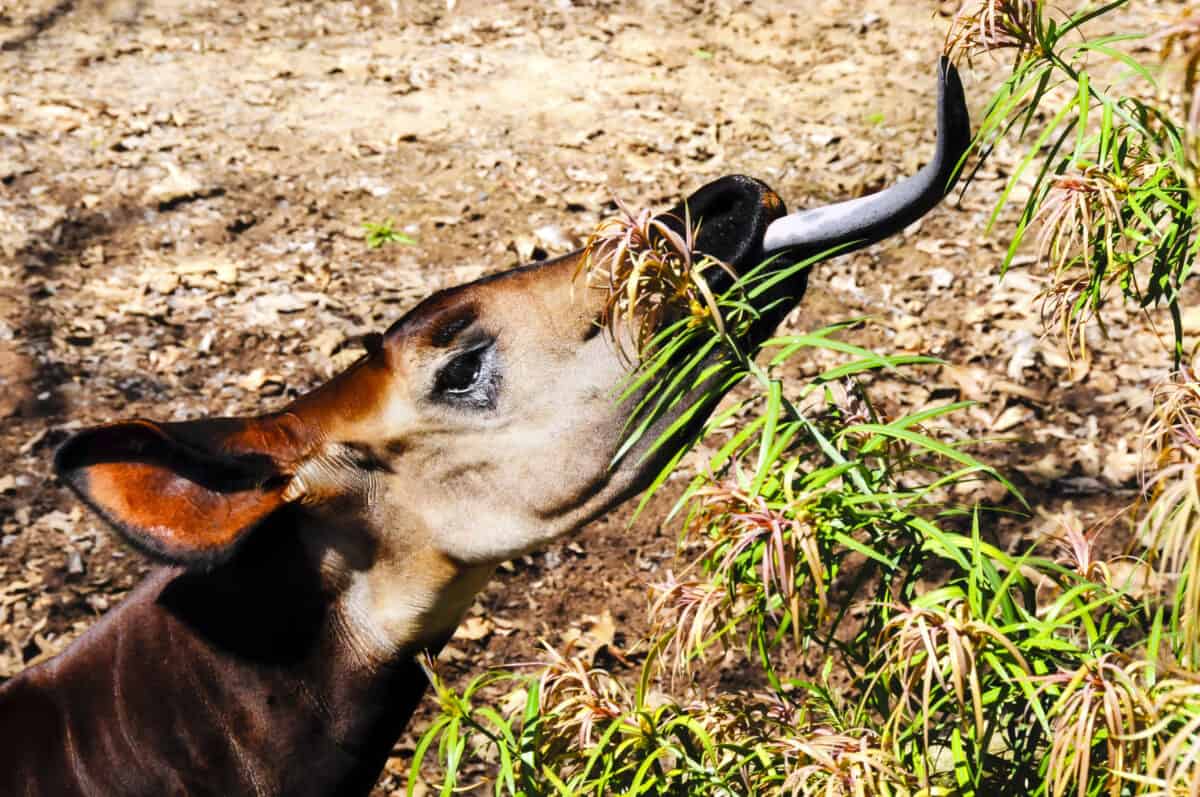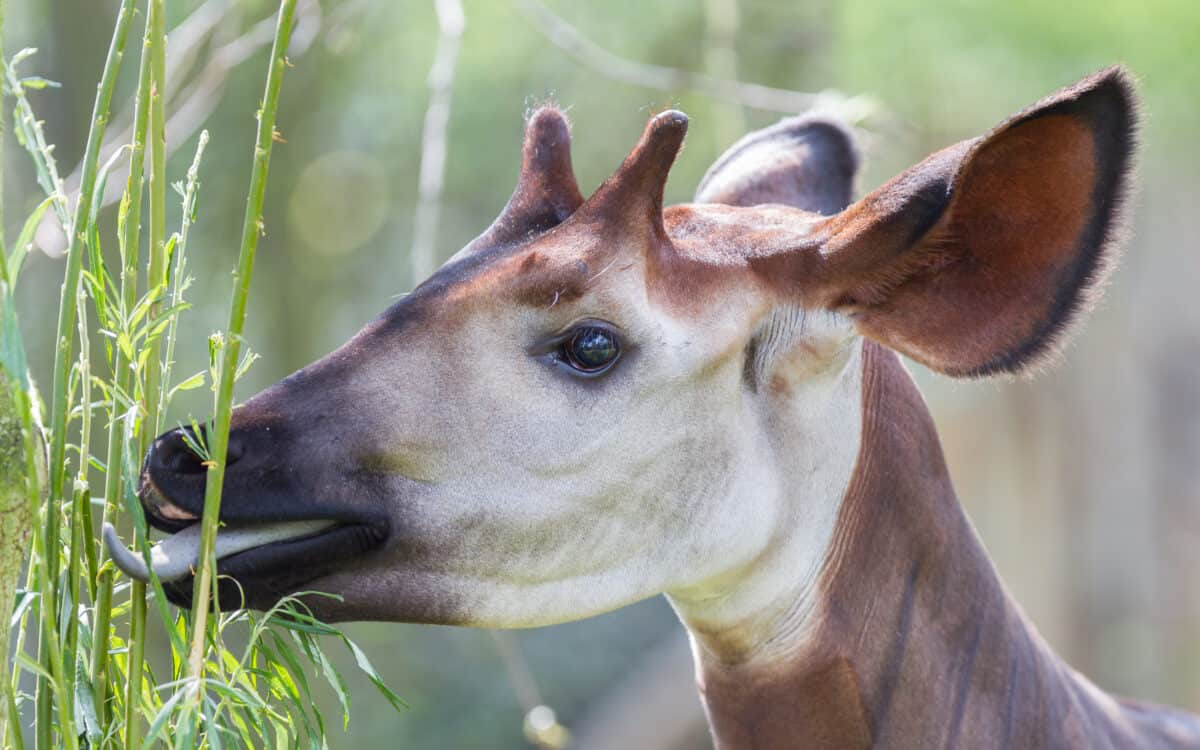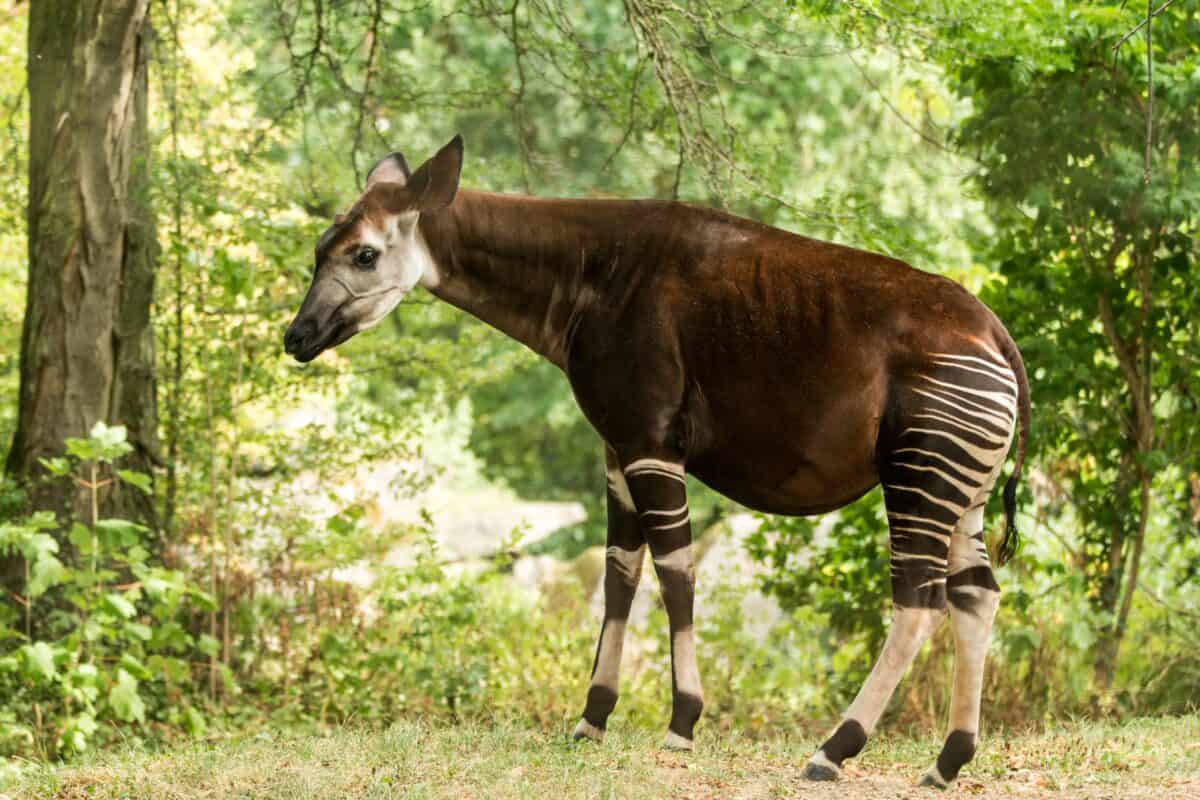The Okapi, often described as a “giraffe in zebra stripes,” is one of nature’s most captivating enigmas. Found deep within the dense Ituri Rainforest in the Democratic Republic of the Congo, this elusive creature has fascinated scientists and nature enthusiasts alike. Despite its zebra-like appearance, the Okapi is the only living relative of the giraffe, sharing more genetic lineage with this towering species than one might suspect.
Unraveling the Okapi’s Appearance

The Okapi possesses a unique and striking appearance that has contributed to its mystique. With its long neck reminiscent of a giraffe and a body clad in a velvety dark brown coat, its most distinguishing feature is its legs and rump, which are adorned with zebra-like stripes. This peculiar combination aids its camouflage in the dappled light of its forest home, helping it blend seamlessly into its surroundings to evade predators.
Understanding the Okapi’s Biology

Standing at around 1.5 to 2 meters tall at the shoulder and weighing between 200 to 350 kilograms, okapis are solitary creatures. They inhabit altitudes ranging from 500 to 1,000 meters above sea level. Okapis are diurnal and primarily herbivorous, feeding on a varied diet of leaves, buds, grasses, fruits, and fungi. Their long, prehensile tongues, stretching as long as 18 inches, allow them to reach and strip leaves from branches with ease and even groom themselves.
A Hidden Life in the Rainforest

The Okapi leads a largely solitary existence, except for when females are raising their young. Their elusive nature and the inaccessibility of their rainforest habitat have made them challenging to study. The Okapi’s social system is characterized by living in low densities and marking territories through scent glands located on their hooves. Despite their relative isolation, okapis communicate with one another through a series of low-frequency sounds that are inaudible to humans.
Conservation Challenges

Okapi populations are currently under threat due to habitat destruction, illegal mining, poaching, and regional conflicts. The IUCN Red List categorizes the Okapi as an endangered species, with population estimates suggesting a declining trend. In response, conservation efforts have been implemented, focusing on anti-poaching patrols, protected area management, and community engagement to preserve the Okapi’s forest habitat.
The Okapi’s Cultural Significance

Indigenous communities around the Ituri Forest hold the Okapi in high regard, often viewing it as a symbol of peace and prosperity. Its unique appearance and rarity have elevated its status in local folklore and tradition. Additionally, the Okapi has captured the imagination of people worldwide, becoming an icon of conservation and biodiversity.
The Future of the Okapi

Sustainable conservation efforts are crucial to ensure the survival of this extraordinary species. Collaborative initiatives among local communities, governments, and international organizations aim to tackle threats and preserve the Okapi’s natural habitat. Through dedicated research and increased public awareness, there is hope that future generations will continue to marvel at and learn from this remarkable “giraffe in zebra stripes.”
Conclusion

The Okapi remains a testament to the wonders of evolution and adaptation. As a symbol of the mysteries still to be discovered within our natural world, it teaches us the importance of preserving biodiversity and habitats. With continued efforts, we can hope to secure a future for the Okapi, ensuring that it continues to roam the rainforests of Central Africa for generations to come.
- 10 U.S. States Where You Are Likely to Spot a Wild Fox - August 18, 2025
- Salmon Swim Upstream for Miles to Lay Their Eggs But What Guides Them Home - August 18, 2025
- 9 Snakes That Love the Desert And 6 That Need Moisture - August 18, 2025

